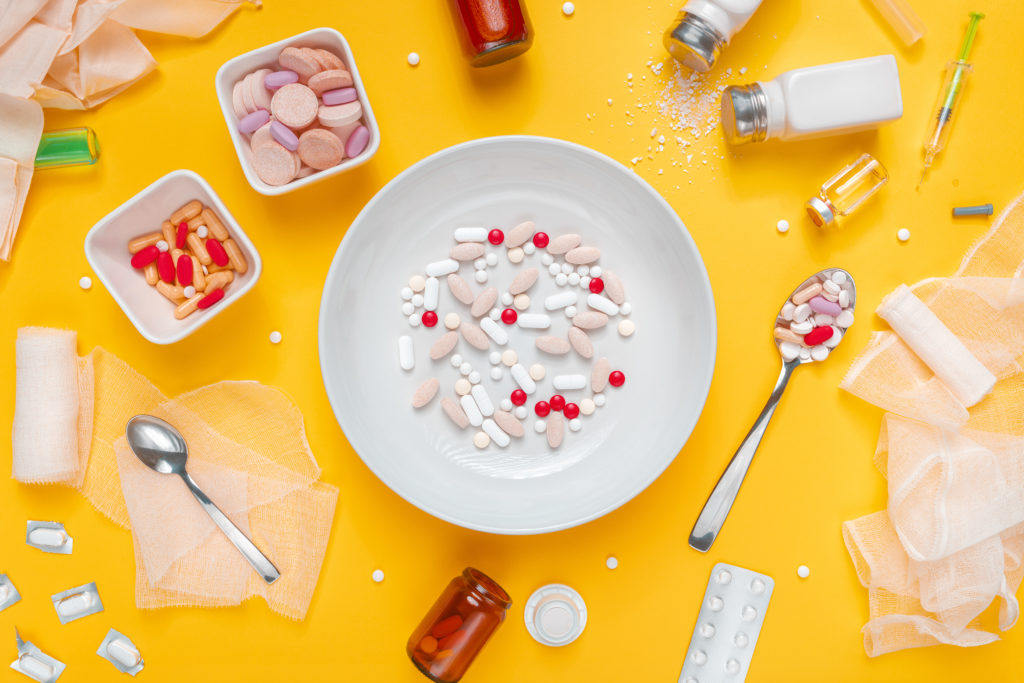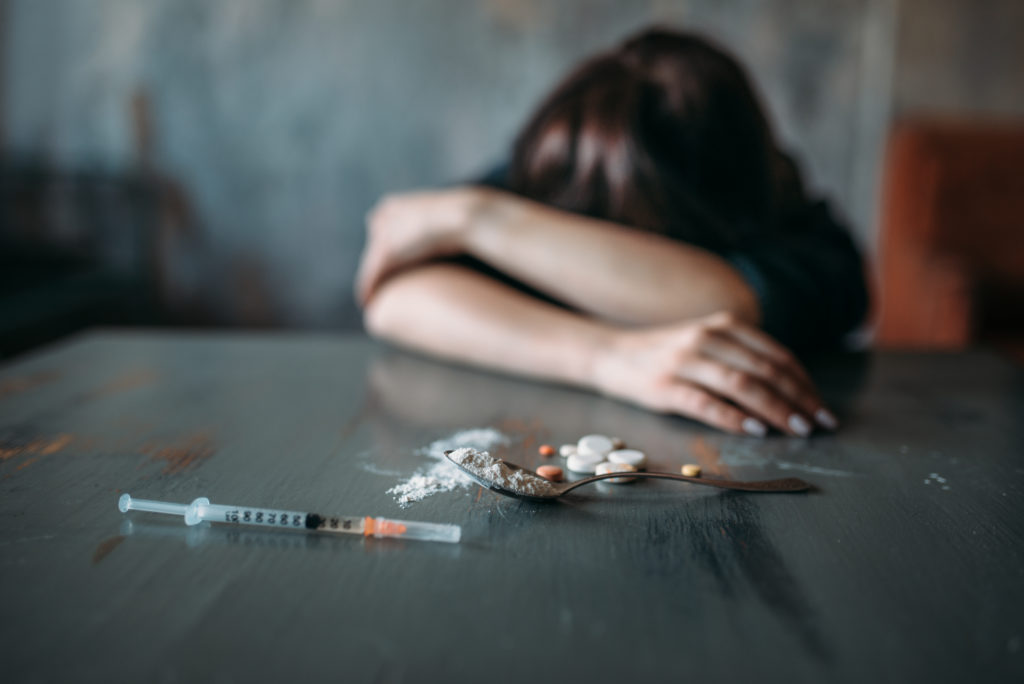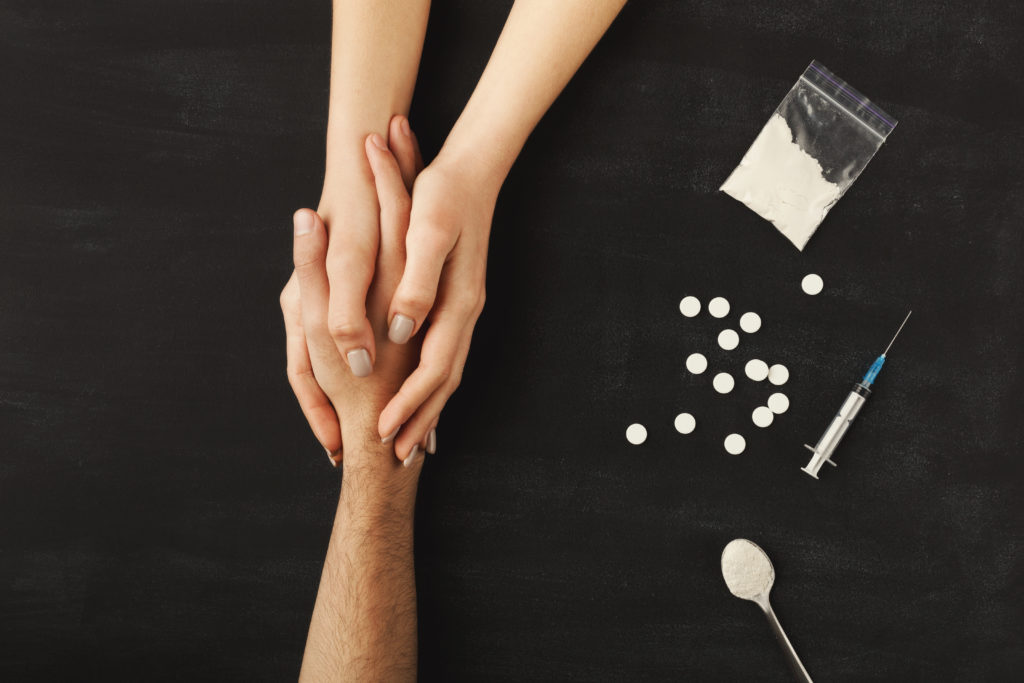Don’t Forget the Other Pandemic Killing Thousands of Americans
Authorities nationwide are reporting an uptick in fatal opioid overdoses during social distancing
(This story originally appeared on Daily Beast)
Lynn sat in the parking lot of her opioid treatment clinic in Columbus, Ohio, for hours on a recent Tuesday. Like in other parts of the country, the coronavirus pandemic was leading to longer wait times for medication—in this case, Suboxone.
Around her, people idled in their cars or stood in a smoking area until the doctor called them inside via text message. The process to get treatment took nearly four hours. “I was worried COVID might escalate more. I didn’t want to be dependent on something that I wouldn’t be able to get all of a sudden,” said the 30-year-old, who asked to be identified only by her middle name. “I kind of weaned myself off Suboxone. That led to an overdose.”
Lynn has struggled with heroin addiction since 2018. She said she hadn’t used opioids for three months, until she was hit by the stresses and isolation of COVID-19, which public health officials fear may be contributing to relapses in Ohio’s recovery community and beyond. Lynn thought she could taper off doses of Suboxone, a drug containing buprenorphine that’s used to treat opiate addiction, in case the pandemic caused more roadblocks for her treatment.
But on a Saturday night in late March, Lynn overdosed at her apartment after using heroin laced with fentanyl. When her boyfriend realized the blow dryer was running for a long time, he shoved through the bathroom door and found her, then administered Narcan, a brand of the overdose-reversing drug naloxone. “As soon as I took one puzzle piece out of place,” she said, “the whole thing fell apart.
Amid social distancing, authorities nationwide are reporting a surge in fatal opioid overdoses. Addiction and recovery advocates say the U.S. is now battling two epidemics at once. From 1999 to 2018, opioid overdoses involving prescription and illicit drugs have killed nearly 450,000 Americans. (One recent study found an additional 99,160 opioid deaths, previously unreported because of incomplete medical records.)
In Franklin County, Ohio, where Lynn lives, the coroner is warning residents of a continued spike in drug deaths, including six on April 24. One week before, the coroner announced that five people died in a span of 12 hours. In February, overdoses were so prevalent the coroner said she might need a temporary morgue to handle the deluge.
“Folks for the fourth Friday in a row we have had a surge of overdose deaths: 6 yesterday,” Dr. Anahi Ortiz posted on Facebook on April 25. “Please keep that narcan on hand, use fentanyl test strips and call 911 for an overdose. Families and friends check on your loved ones who use frequently, consider Thursday, Friday and Saturday to check in and talk.”
Montgomery County, Ohio—which is home to Dayton and was considered the country’s overdose capital in 2017—is reporting a 50 percent jump in overdoses over last year. Coroner Kent Harshbarger suggested to one local news outlet this increase could be closer to 100 percent: “March had around 42 which, our normal baseline is somewhere in the 20s usually. So 42 is a significant increase.”
Indeed, authorities in counties across Florida, Texas, Pennsylvania and New York are also reporting rises in overdoses during the COVID-19 crisis.
Helen Jones-Kelley, the executive director of Montgomery County Alcohol, Drug Addiction and Mental Health Services, said her agency is redoubling efforts to get in front of the spate of overdoses. That includes delivering naloxone kits to households with a history of drug abuse and reviewing ledgers to see whose kits are expired. She said her task force is penning personal notes for those who might be struggling, and informing people about telehealth treatment options for addiction. “We think we can get a handle on this before it gets to a point where there’s no turning back,” Jones-Kelley told The Daily Beast.
The county had anticipated some spikes in overdoses because of a tumultuous last year, Jones-Kelley said. In August, a gunman killed nine people outside a Dayton bar, and tornadoes walloped Dayton and surrounding areas in May.
“As those anniversary dates come around, you expect people to self-medicate to some extent,” she said. “This pandemic has escalated that behavior. It’s the anxiety. You have people beat down to the point where coping strategies are at the lowest ebb.”
Lynn told The Daily Beast she feels lucky to live with her partner, who is supportive of her recovery and knows the signs of opioid addiction; not everyone has a support system. “We’re asking families of those with substance use disorder to be a little bit more understanding. If you know what’s going on, you can save them. You can monitor them. But if they’re hiding it, it’s roulette,” she said.
She works with Harm Reduction Ohio, a nonprofit that connects people to Narcan kits and syringes for safer use. “I’m hearing of a lot of people relapsing—people who rely on therapy and meetings. Zoom is just not the same,” Lynn said.
“The people I’m giving it to don’t want to go to the health department,” he said.

Lynn said isolation and boredom can be a trigger. “The opposite of addiction is human connection, not sobriety,” she said. “Just being totally isolated—especially now that stimulus money came through for a bunch of people—it’s a huge temptation. I didn’t get my money yet, and I’m glad I didn’t.”
Traci Green, director of the Opioid Policy Research Collaborative at Brandeis University in Massachusetts, told The Daily Beast that community programs should push to secure as much naloxone as possible and provide easy access to treatment in light of stimulus checks.
“Because people will have money and the market pays attention to these things,” Green said. “All markets pay attention to these things. The illicit market is no different.”
While some Americans struggle to find toilet paper and cleaning supplies during the pandemic, the country’s drug users are also facing a dwindling supply.
“Just like we’re having trouble finding paper products and stuff in grocery stores, traffickers are having issues trying to find the chemicals to make our drugs,” said Sterner, a member of the Opioid Overdose Task Force for the State of Pennsylvania.
“In some ways this is a good thing,” Sterner added. “We’re actually seeing less of these substances in our communities in some areas. If we can’t get on planes, neither can the drugs.”
But Sterner says in places with a shortage of heroin, prices will go up and put a bigger strain on drug users experiencing poverty. That in turn could lead to an increase in criminal activity, as people seek money to buy drugs, and to a spike in the use of other drugs like methamphetamine, which is becoming more widely available. He said addiction treatment for meth, however, isn’t as robust as that for opioids.
Meanwhile, people might unknowingly be consuming less potent versions of drugs like heroin, which could be diluted in face of shortages. Sterner said that once the supply chain reemerges, it could open the floodgates to more overdoses, as drugs will be more potent and come at a cheaper post-coronavirus price.
“We didn’t do so great in preparing for the COVID pandemic,” Sterner said. “We need to make sure that we’ve learned from this experience.” He said recovery groups and law enforcement should continue to supply naloxone to prepare for higher rates of overdose and provide access to fentanyl test strips. They should also ensure quick access to treatment and make sure residential treatment centers have open beds.
“The old way of understanding the opioid crisis may not be the best way of understanding it in the post-COVID economy,” Sterner added.
Green, of Brandeis University, said coronavirus is an opportunity to showcase what harm reduction can do in emergency situations.
Some clinics and treatment centers decreased hours at their physical locations but continue to provide mobile services and delivery. (In New York City, for example, officials rolled out a methadone delivery system for people who are quarantined.)
Green also said the government’s approval of certain emergency measures—like prescribing buprenorphine via telemedicine—was unexpected.
“It’s an opportunity to think about why we weren’t doing this before,” she said.
Some clinics and treatment centers decreased hours at their physical locations but continue to provide mobile services and delivery. (In New York City, for example, officials rolled out a methadone delivery system for people who are quarantined.)
Green also said the government’s approval of certain emergency measures—like prescribing buprenorphine via telemedicine—was unexpected.
“It’s an opportunity to think about why we weren’t doing this before,” she said.
On Sunday, the man secured a flight back home. He says he’s worried about transmitting COVID-19 to his 67-year-old mother. “Both of us will be in the same household that’s not set up for quarantining one person,” the patient told The Daily Beast last week. “It kept me up last night. I don’t know how this is going to work. That’s my biggest fear: that I’m going to get sick on the plane and bring it home to her.”
Patients aren’t the only ones with anxiety over COVID. Mark W. Parrino, president of the American Association for the Treatment of Opioid Dependence (AATOD), an industry trade group, said some OTPs ran out of protective equipment and were treating patients without masks.
Parrino said he received reports of one Louisiana addiction nurse dying of COVID, and of another OTP nurse in Baltimore contracting the virus.
“When you have reports from news organizations applauding first responders, police or firefighters as heroes, you don’t see that kind of reporting on the staff of OTPs,” Parrino said. “That may be related to stigma.”

Her staff has collaborated with OTPs to allow curbside dosing and pickups of medications with a clear chain of custody. “All these things we’ve put in place but they didn’t exist before,” Burns said. “It was an absolute crapshoot the first two weeks.”
While smaller residential treatment facilities stopped accepting new patients, Hope House has kept its doors open during coronavirus.
Burns, a pharmacist who served in the Navy, said she immediately created quarantine quarters, hired professional cleaners, and crafted a 21-page coronavirus protocol she shared with other providers. She also obtained protective masks for all patients and staff.
Many of her patients don’t have the means to buy smartphones, so her facility purchased tablets for their counseling sessions on Zoom.
For Scott Strode, who runs The Phoenix, a free network of gyms for people in recovery, things changed overnight.
“We weren’t able to run our programs anymore in person,” Strode, a triathlete who once struggled with addiction, told The Daily Beast. “Because of the constraint that was put on us, we had to figure out how to do this virtually.”
Through live-streamed classes, which focus on yoga, meditation or weight-training, and Zoom social hours, the Phoenix has been able to reach people who otherwise wouldn’t have visited its brick-and-mortar locations. Some new members live in more rural communities and even other countries.
“In some ways it’s given us an opportunity to get to more people but in the same breath it’s taken away significant recovery support for a lot of people who are at different points on their recovery journey,” Strode said.
“A current that’s operating under the radar is this despair, anxiety, feeling disconnected, fearful,” he added. “That is a fertile ground for addiction.”
Strode said virtual programming has brought 1,000 participants a week. The only requirement to join is that they’ve been sober for at least 48 hours.
“We’ve forwarded all our phone lines to cellphones for our staff,” Strode said. “The thing that scares me is the people we don’t see that used to come to our locations.”
In Detroit, Michigan, one recovery center is reeling from the loss of three employees to COVID. Twenty-five of its members also died of the virus.
Andre Johnson, president of the Detroit Recovery Project, said that even if people stay in recovery, they’re facing other health disorders and don’t always have access to treatment. His clients are also struggling with social distancing.
“People of color are not trusting of the government,” Johnson added. “They haven’t always trusted white folks when you look at history, when you look at slavery and the trauma it’s caused. Now we’re dealing with COVID. We’ve got so many bodies but not enough space in the morgues.”
“This creates mental health challenges for people,” Johnson said.
As of Monday, the city had 8,679 cases of COVID and 950 deaths. And, as the Associated Press reported, nearly 77 percent of the residents who were killed by coronavirus-related complications have been African-American.
Detroit Recovery Project has responded by continuing to direct people to addiction treatment—and by supplying 1,000 masks and administering 200 COVID tests in a parking lot. The group is also helping older residents connect on Zoom. “I’ve seen a lot of love and people coming together to raise money over the last few weeks,” Johnson said. “Not only are people struggling with their addiction, but they can’t even eat.”
“We’re talking about a disenfranchised community,” he added. “People who are already living in a harsh situation and now it’s gotten worse.”
If you or someone you know is struggling with substance abuse, visit us HERE to start your FREE trial of Freedom 365 today!
Developed by Addiction Recovery Author and State Licensed Addiction Treatment Center CEO, Brian McAlister, the Freedom 365 – Virtual Recovery System takes the content and activities of a rehabilitation program and puts it into interactive digital experience that can be accessed privately – anytime, anywhere – from a phone, tablet or PC. For more information on Freedom 365, visit vrsfreedom365.com.



